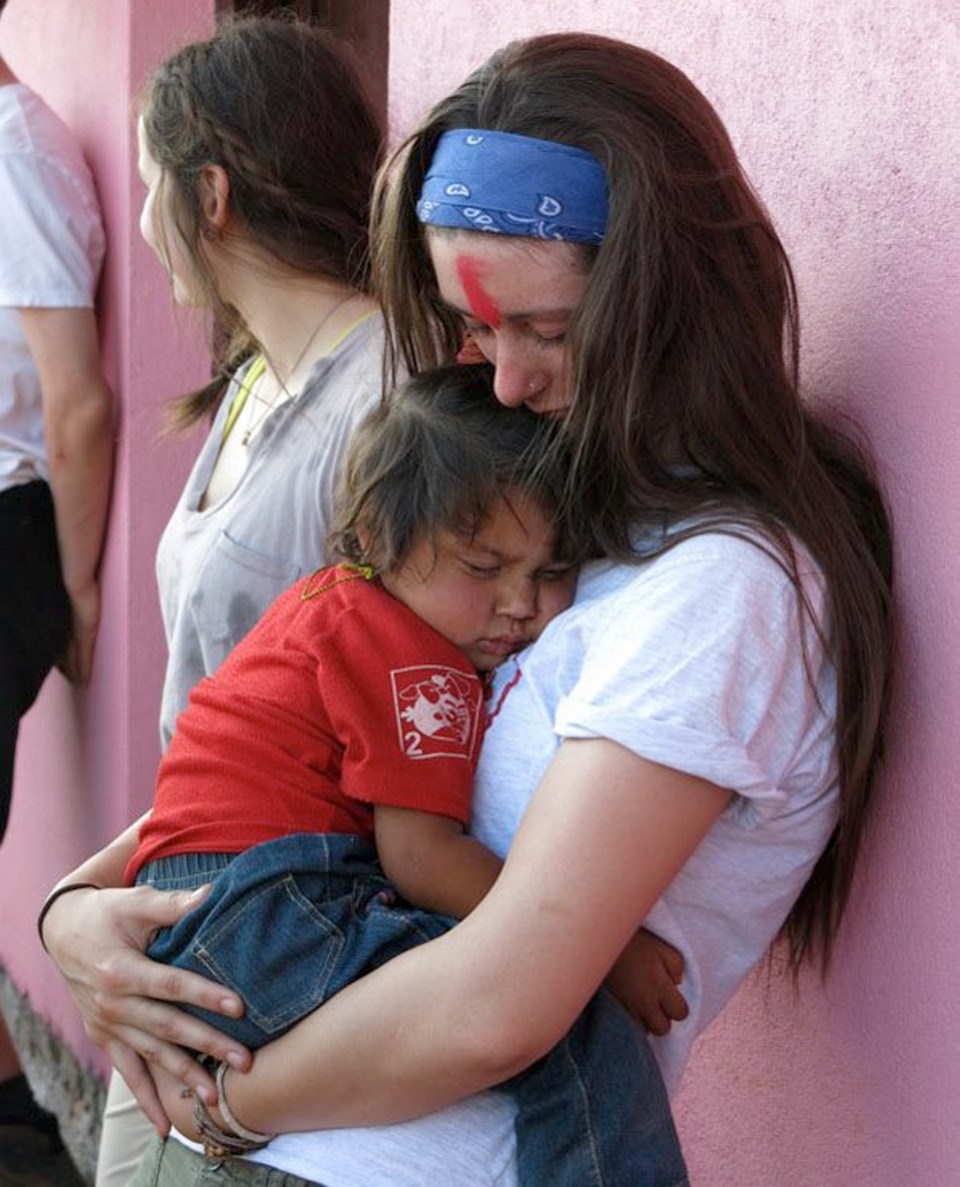 It being her first full day in Nepal, Sidney’s Haley Westra was at Kathmandu’s Monkey Temple when the earthquake struck.
It being her first full day in Nepal, Sidney’s Haley Westra was at Kathmandu’s Monkey Temple when the earthquake struck.
The teenager later described it as feeling as though she were on a roller-coaster. At first, she didn’t know what was happening, couldn’t figure out why she was falling down.
Buildings swayed, then shook violently, then — as the earthquake went on and on and on — tumbled around her. People were screaming, running. Westra grabbed a woman by the arm and threw her to the ground just before a structure toppled on her. Others weren’t so lucky, were buried as ancient edifices collapsed into rubble, right in front of Westra’s eyes.
“If I was standing a few feet in any other direction, I would have been crushed by a falling building,” she said this week.
Most of us have moved on since last spring, when a pair of earthquakes killed closed to 9,000 people and devastated the infrastructure and economy of the poor, remote, mountainous country.
Not Westra, for obvious reasons — she couldn’t get Nepal out of her head. As the April 25 anniversary of the first earthquake approached, she couldn’t stop thinking about what she had left behind.
“I just kept dwelling on it and dwelling on it. I could not bear the idea of just staying home.”
So, fresh out of her first year of nursing school at Camosun College, she hopped on a plane and headed back, arriving in Kathmandu exactly a year after the disaster.
“It was very spontaneous,” the 19-year-old says.
She was only there for a week, but says it was worth it. “I wanted to get closure and I wanted to leave Nepal with a better image.”
What Westra found was both sobering and inspirational. Much of Kathmandu’s rubble is gone and the streets are tidy, but she saw little evidence of reconstruction. “There has been a lot of cleanup but there hasn’t been a lot of rebuilding.”
The Nepalis themselves were determined. “They were proud to talk about how they weren’t victims, that they’re survivors and they’re going to get through it. To see that strength was encouraging.”
But there seemed to be fewer visitors around, even in the adventure tourism mecca of Pokhara. Government officials told BBC News last month that the number of visitors dropped 30 per cent in 2015.
That’s troubling, because we keep hearing that the best thing foreigners can do for Nepal is go there. The country depends on tourism, can’t recover without it.
Westra herself stayed on in Nepal for several weeks after the earthquake. Most westerners got out of the country as fast as they could, but the teen headed the other way, deeper into the countryside and the isolated village where she had first volunteered as a Stelly’s Secondary student in 2014. She spent more than a month there in post-quake 2015, volunteering for a non-profit that was doing relief work.
Returning to Victoria last June, Westra was dismayed to see how quickly Nepal had fallen off the radar screen in Canada. As quick as we were to respond to the country’s plight in the days after the earthquake, we were just as quick to forget all about it.
“The next new thing took over,” Westra said.
No surprise there. We Canadians can be proud of our generosity when disaster strikes, but we have the attention span of fruit flies. Crisis today, forgotten tomorrow.
That’s the way it was after the Japanese earthquake and tsunami in 2011, the wildfire that destroyed a third of Slave Lake that same year, the Haitian earthquake of 2010, Hurricane Katrina in 2005, the Indian Ocean tsunami in 2004… How long do you think it will be before Fort McMurray becomes old news?
Westra has a practicum to focus on now, and three more years of nursing school after that. But she says she’s not done with Nepal, even if the rest of the world seems to think of it as yesterday’s problem.
“I’ll definitely be going back.”



